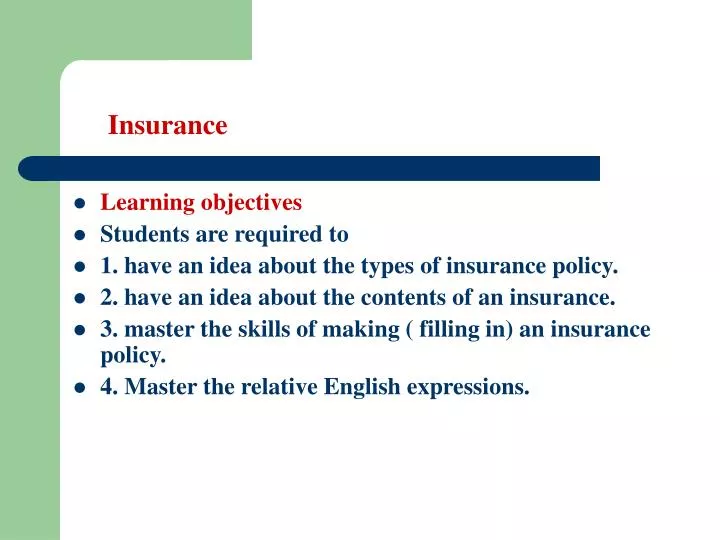An Unbiased View of Pacific Prime
An Unbiased View of Pacific Prime
Blog Article
The Buzz on Pacific Prime
Table of ContentsSome Known Details About Pacific Prime Pacific Prime Things To Know Before You Get ThisSome Known Facts About Pacific Prime.See This Report about Pacific Prime
In the majority of states, the insurance company is called for to send you a copy of the changes to your plan. It is essential that you review Recommendations or Cyclists so you comprehend just how your policy has altered and if the plan is still ample to satisfy your requirements. To get a copy of your insurance plan, please call your insurance coverage agent or firm.
The Institute of Medicine (IOM) Board on the Effects of Uninsurance launches an extensive examination of evidence that addresses the value of medical insurance protection with the publication of this record. Insurance coverage Issues is the first in a series of 6 reports that will be released over the following two years recording the truth and repercussions of having an estimated 40 million people in the United States without health insurance policy protection.

Pacific Prime Things To Know Before You Buy
The goal of this collection of studies is to refocus plan focus on a longstanding issue. Following the longest financial development in American history, in 1999, an estimated one out of every 6 Americans32 million grownups under the age of 65 and greater than 10 million childrenremains uninsured (Mills, 2000).

10 percent of the population accounts for 70 percent of health treatment expenditures, a connection that has actually continued to be constant over the previous 3 years (Berk and Monheit, 2001) - international travel insurance. Thus medical insurance continues to serve the function of spreading out risk even as it progressively funds routine care. From the perspective of wellness care suppliers, insurance lugged by their clients aids secure an income stream, and neighborhoods take advantage of economically feasible and secure wellness treatment experts and institutions
Federal government provides health insurance to populaces whom the exclusive market might not offer properly, such as impaired and seniors, and populaces whose accessibility to healthcare is socially valued, such as kids and expecting females. The utmost ends of medical insurance coverage for the specific and communities, including workplace communities of staff members and companies, are enhanced health outcomes and lifestyle.
Fascination About Pacific Prime
Workers rate medical insurance initially without a doubt in importance among all the benefits provided in the work environment (Salisbury, 2001). There have been sizable financial investments of personal and public funds to provide health insurance policy, many individuals still have no protection. Despite extensive coverage of study findings and health care research study results, the basic public stays overwhelmed and misinformed regarding Americans without medical insurance and the effects of doing not have protection.

Without doubt, the intricacy of American wellness care financing systems and the wide range of resources of information include in the general public's complication and suspicion concerning health insurance coverage data and their interpretation. This record and those that will comply with aim to distill and provide in easily reasonable terms the considerable research that bears upon questions of medical insurance coverage and its value.
Fifty-seven percent of Americans questioned in 1999 thought that those without wellness insurance policy are "able to obtain the care they require from medical professionals and hospitals" (Blendon et al., 1999, p. 207). In 1993, when national attention was concentrated on the troubles of the without insurance and on pending health treatment regulation, simply 43 percent of those questioned held this belief (Blendon et al., 1999).

They additionally receive less preventative solutions and are less most likely to have normal look after chronic problems such as high blood pressure and diabetic issues. Chronic conditions can bring about pricey and disabling issues if they are not well handled (Lurie et al., 1984; Lurie et al., 1986; Ayanian et al., 2000). One national study asked more than 3,400 grownups regarding 15 highly major or morbid conditions.
Fascination About Pacific Prime
Extra proof exists later on in this phase in the discussion of insurance coverage and accessibility to health and wellness treatment. https://www.openstreetmap.org/user/pacificpr1me. Individuals without health and wellness insurance are young and healthy and balanced and choose to do without protection. Virtually half (43 percent) of those surveyed in 2000 believed that individuals without health and wellness insurance policy are more probable to have illness than people with insurance policy
Voters and plan manufacturers in focus team conversations define those without insurance coverage as young individuals who have the opportunity to be covered and feel they do not need it (Doorperson Novelli, 2001). Contrasted to those with at least some personal coverage, the uninsured are much less most likely to report being in exceptional or excellent wellness (Agency for Health Care Study and Quality, 2001).
SOURCE: Facility for Price and Financing Research more information Studies, Firm for Healthcare Research Study and High quality, based upon MEPS data. Young adults in between 19 and 34 are much more most likely to do not have medical insurance than any type of various other age. This is chiefly because they are less usually eligible for employment-based insurance coverage because of the nature of their work or their brief period in it.
The assumption that people without insurance have better-than-average health and wellness complies with from puzzling the relatively young age profile of the without insurance with the better health and wellness, generally, of younger persons. This obscures the link between health condition and medical insurance. For those without accessibility to office medical insurance, poor health and wellness is a possible obstacle to purchasing nongroup insurance coverage because such protection might be highly valued, leave out preexisting conditions, or be merely not available.
Report this page